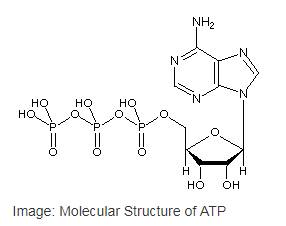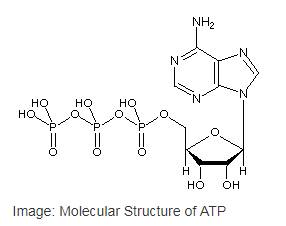
(a)
Interpretation:
The formation of isoleucyl-tRNA proceeds through the reversible formation of the enzyme bound Ile AMP intermediate. Prediction of 32P-labelled ATP formation from 32PPi is to be done by ATP and 32PPi
Concept introduction:
Adenosine triphosphate or ATP is the most common
Translation is the mechanism via which mRNA is decoded and translated into a protein.

(b)
Interpretation:
The formation of isoleucyl-tRNA proceeds through the reversible formation of the enzyme bound Ile AMP intermediate. Prediction of 32P-labelled ATP formation from 32PPi is to be done by ATP and 32PPi
Concept introduction:
Adenosine triphosphate or ATP is the most common nucleotide in the cell as well as the primary cellular energy currency of in all the life forms. ATP is a type of nucleotide that has a ribose sugar, adenine nitrogenous base and a triphosphate (three-sequential phosphate group). The phosphate groups are attached to each other byphosphoanhydride bonds and the triphosphate is attached to the ribose sugar by a phosphoester bond.
Translation is the mechanism via which mRNA is decoded and translated into a protein.

(c)
Interpretation:
The formation of isoleucyl-tRNA proceeds through the reversible formation of the enzyme bound Ile AMP intermediate. Prediction of 32P-labelled ATP formation from 32PPi is to be done by isoleucine, ATP and32PPi
Concept introduction:
Adenosine triphosphate or ATP is the most common nucleotide in the cell as well as the primary cellular energy currency of in all the life forms. ATP is a type of nucleotide that has a ribose sugar, adenine nitrogenous base and a triphosphate (three-sequential phosphate group). The phosphate groups are attached to each other byphosphoanhydride bonds,and the triphosphate is attached to the ribose sugar by a phosphoester bond.
Translation is the mechanism via which mRNA is decoded and translated into a protein.

Want to see the full answer?
Check out a sample textbook solution
Chapter 31 Solutions
Biochemistry
- Serine protease enzyme mutation To show differences in the effect of the nucleophilic attack of the carbonyl group (C=O) of peptide bond between the catalytic triad of serine, histidine and aspartic acid, and another catalytic triad contains alanine, histidine and aspartic acid Provide/ draw an example of catalytic mechanism with catalytic triad contains alanine, histidine and aspartic Please answer completely will give rating surelyarrow_forwardQuestion:- Describe the function of each of the following Shortly. a. Amino-acyl tRNA synthetase b. E coll release factors 1 and 2 (RF1 and RF2) c. 5' methyl-guanosine cap d. Ribosomal P sitearrow_forwardbiosynthesis of Thymidine monophosphate from ATP, HCO3-, Gln, Asp, quinone, and methylene THF. Show your work and don’t forget that the conversion of U to T only happens AFTER Ribonucleotide Reductase processes the 2’, 3’ ribose to the 3’ deoxy ribosearrow_forward
- Suggest a reasonable strategy for the specific phosphorylation of the5’ –OH group of a nucleoside.arrow_forwardBIOMOLECULES - MULTIPLE CHOICE - Please answer properly QUESTION : In human beings, what is the major control of de novo pyrimidine nucleotide synthesis? A. substrate availability B. competitive inhibition of carbamoyl phosphate synthetase II C. feedback inhibition of glutamine-PRPP amidotransferase D. vailability of N-acetyl glutamatearrow_forwardKetosis in Dairy Cattle: 1. Explain why propionate can contribute to the next synthesis of glucose but acetic acid cant.arrow_forward
- Molecular detail of spike Y453Farrow_forwardProtein: QQICIMFELTQISS Predict the products of the following reactions with the protein given, if there is none, write NO RXN. Also indicate, if the reaction is fast or slow.arrow_forwardresting state of the protein, the Lys 216 Schiff base has pKa = 9.5 and Asp 85 has pKa = 3.5. When the conformational change occurs, the proton that was on the Schiff base moves to Asp 85. This should tell you that one or both of these two pKas changed with the conformational change. How does the pKa of Asp 85 compare with the pKa of the Lys 216 Schiff base after the conformational change?arrow_forward
 BiochemistryBiochemistryISBN:9781305577206Author:Reginald H. Garrett, Charles M. GrishamPublisher:Cengage Learning
BiochemistryBiochemistryISBN:9781305577206Author:Reginald H. Garrett, Charles M. GrishamPublisher:Cengage Learning
